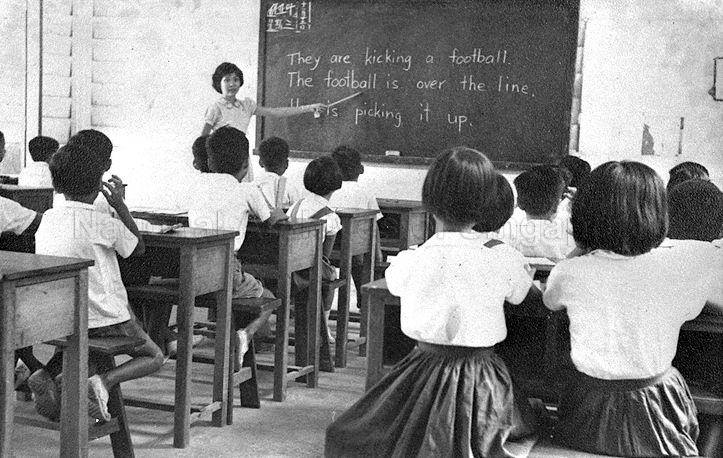Do you know that Singapore used to have Primary 7 and Primary 8, and the Singapore education system has made a big U-turn since 2024?
Here’s what happened in the 90s, and why you’re no longer seeing Primary 7 or Primary 8 students. If you prefer to watch a video about this topic instead, here’s one we’ve done:
The Old Education System
Before 1979, the education system in Singapore was very different.
There were still primary and secondary schools, but unlike today, when 98% of primary school students went to secondary school, this wasn’t the case back then.
In the 1970s, about 1/3 of students who went to primary school eventually did not attend secondary school.

Kids were failing their exams, and they dropped out to help with household expenses since they were young.
Back then, a report by Deputy Prime Minister Goh Keng Swee listed a few main problems.
One is that students spoke dialect at home, so learning English and their mother tongue in school was challenging.

Now, remember this point first: English and Mother Tongue.
The other problem is that the system needs to be more flexible. Students have different learning abilities, so not all of them can cope with the same system.
So, the solution?
Streaming, or NES, was introduced for both primary and secondary schools.
Backlash
As expected, it faced quite an extensive debate in parliament because it would be like labelling students into different classes.
So, despite the argument that streaming might lead to “serious psychological impacts,” streaming continued.
New Education System (NES) That Introduced Primary 7 and Primary 8
You might think it’s the EM1, EM2, and EM3 systems for primary school and the Express, Normal (Academic), and Normal (Technical) for secondary school.
You should be familiar with the Express, Normal (Academic) and Normal (Technical) for secondary schools.
However, it wasn’t the same for primary school, and it wasn’t the EM1, EM2, and EM3 system. Primary school started with the normal stream, the extended bilingual stream, and the monolingual stream.
If they pass their exams at Primary 3, they’ll be streamed into the normal six-year primary school education, where they’ll learn the usual English and mother tongue. However, if they pass Primary 2 and fail Primary 3, they’ll still study English and their mother tongue, but they will study until Primary 8, known as the Extended bilingual course.
If they fail in Primary 2 and Primary 3, they’ll choose a monolingual stream, which focuses on “basic literacy and numeracy,” and they’ll also study until Primary 8.
Yes, that is why you’ve heard of people studying until Primary 7 or Primary 8; that was in the past, because…
The System since 1991
This normal, extended, and monolingual stream, which some people call the Primary Eight stream, was changed to the EM1, EM2, and EM3 systems in 1991.
This is why EM stands for English and Mother Tongue. Remember: the streaming splits students who can handle two languages or just basic literacy.
So, EM1 was for students who could use English and their Mother Tongue as their first languages, EM2 was for students who used English as their first language and their mother tongue as a secondary language.
And EM3 was for students who used English as their first language and prepared students to have basic literacy in their mother tongue. There’s even ME3, the opposite, in which the mother tongue is the first language, and English is just for basic literacy.
All primary school students will only study until Primary 6, regardless of EM1, EM2 and EM3. There were even more changes and eventually, the entire EM1, EM2 and EM3 system was removed completely in 2008.
Unlikely Success?
Now, here’s the thing:
According to statistics, despite how bad it looks, how it widens the social class, and how it negatively impacts the population’s psyche, it has worked very well.
In addition to the fact that almost every kid in Singapore is in school nowadays, compared to the days when dropouts and failures were common, Singapore’s educational system has also earned a reputation as a world leader.
Reverting to the Old System
Nevertheless, the entire system will eventually remove streaming from primary schools in 2008 (as mentioned earlier) and secondary schools from 2024 onwards.
Instead, subject-based learning is now the key, and therefore, after 45 years, the streaming system has made a U-turn back to what it was like.
Would it work?
We’d have to wait and see, but at least, you now know that when someone said he used to be in Primary 8, he wasn’t lying.
Unless he said he’s 27 years old this year. Then he’s lying about his age.




